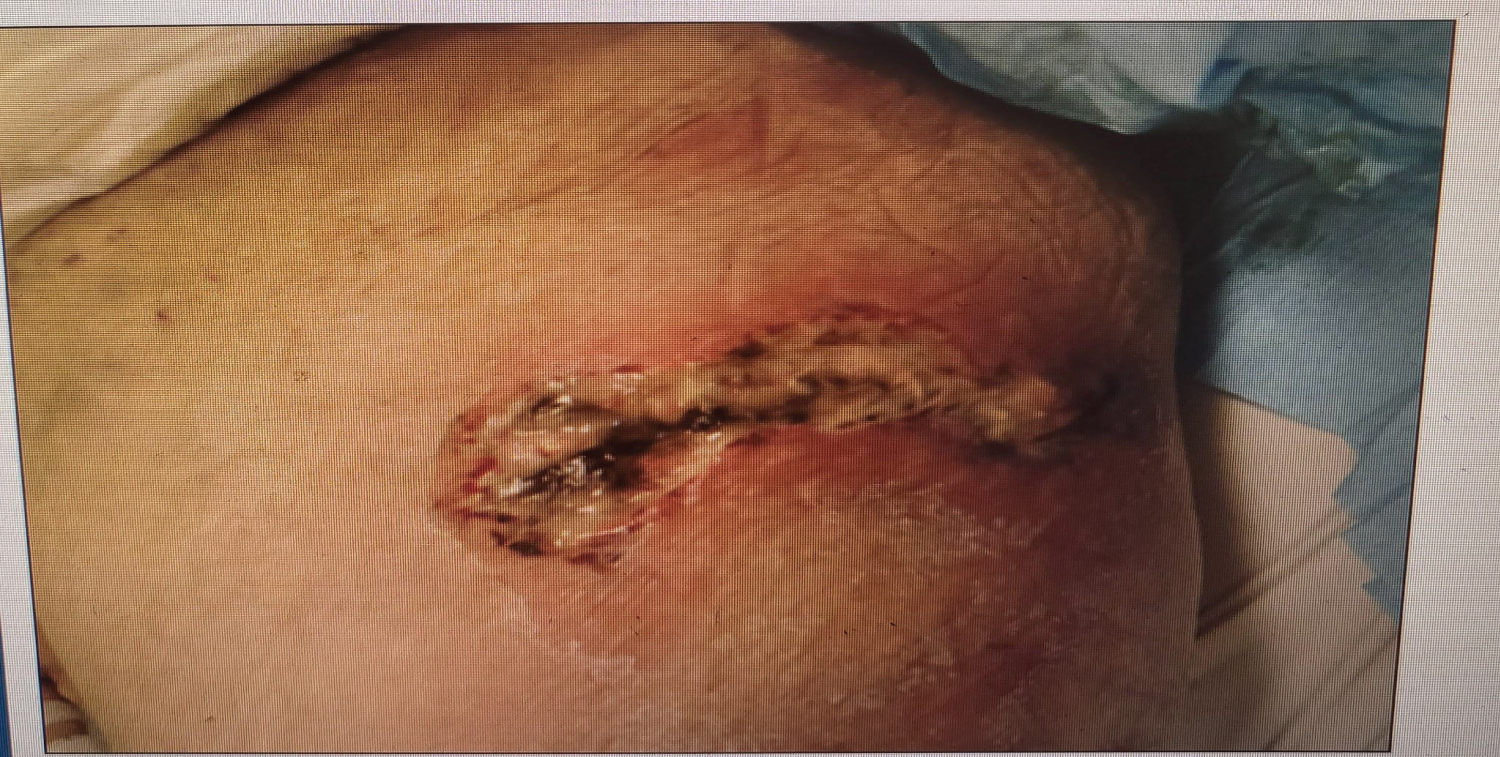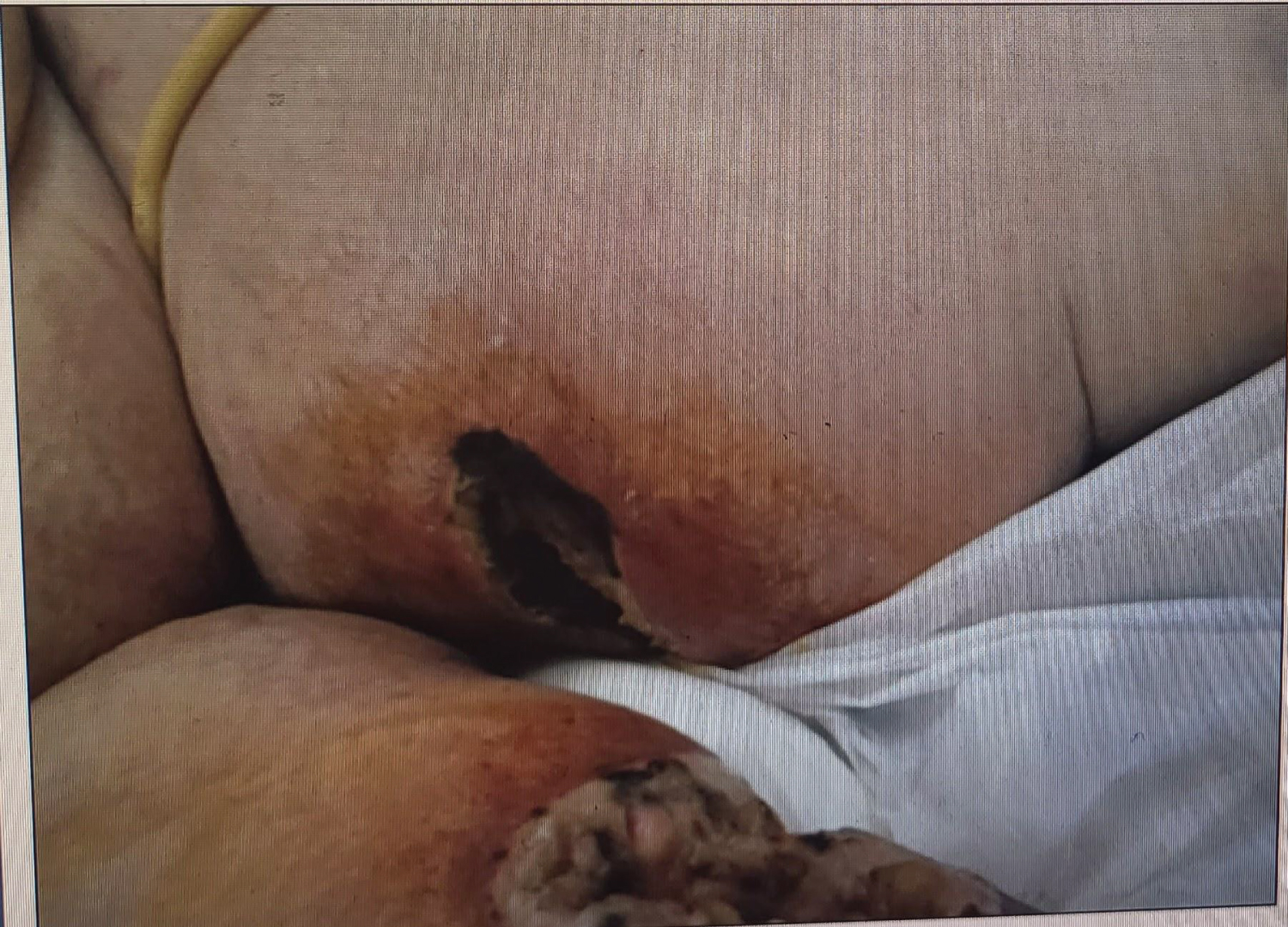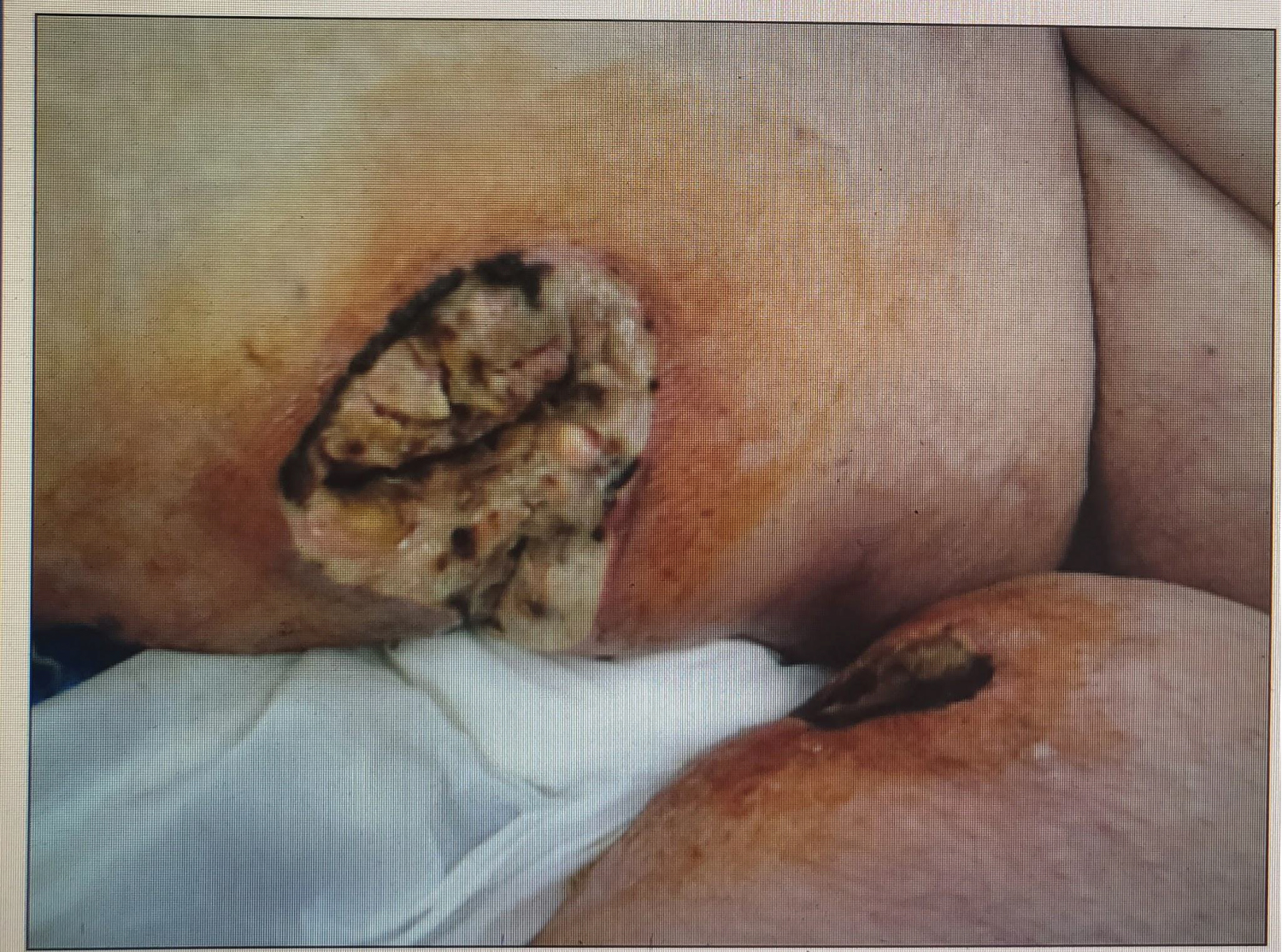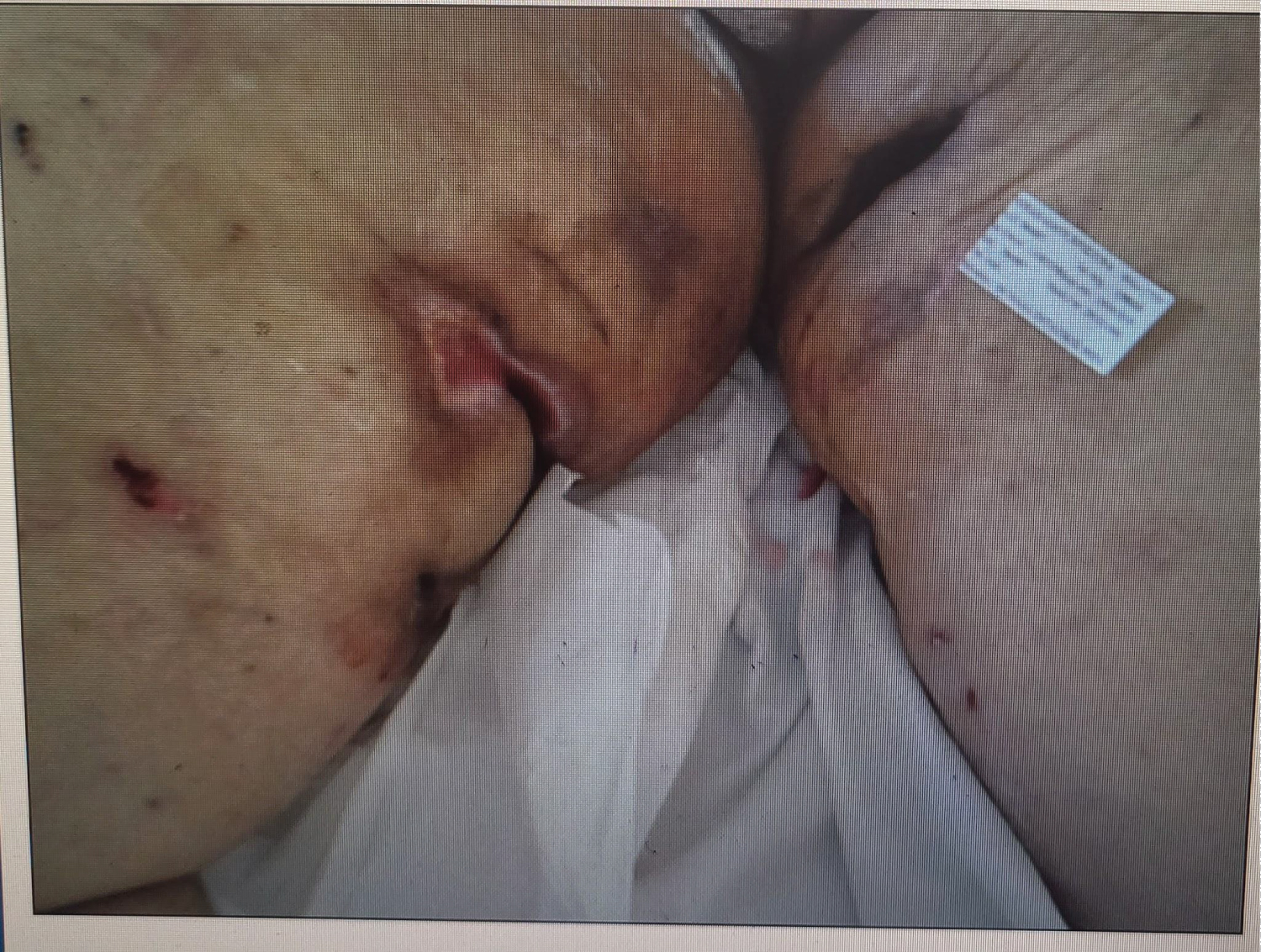The first critically ill case with medial soft tissue tuberculosis is recorded for the first time in Cyprus. She is a young patient with a rich medical history. Tuberculosis was detected in the soft tissues of the medial degree in the Intensive Care Unit of the Nicosia General Hospital. The purpose of this specific study is to record and analyze the first clinical case in Cyprus of a critically ill patient with tuberculosis and simultaneous infection with Mycobacterium soft tissue on the medial surface of the thighs. For the publication of this study, a consent form was obtained from the patient herself. The patient survived and was discharged from the Intensive Care Unit to another part of the hospital and was subsequently discharged from the hospital in general.
TB, Mycobacterium, ICU, Soft tissue, Critically ill
The genus Mycobacterium, the only entity in the family Mycobacteriaceae (order Actinomycetales, phylum Actinobacteria), consists of a distinct group of aerobic, non-motile, non-spore-forming, Gram-positive bacilli. They are characterized by a slow growth rate and a high content of mycolic acids within the cell wall, which makes them resistant to alcohol and acid washing. Skin and soft tissue infection (SSTI) from Mycobacterium tuberculosis complex is rare, but remains a potential threat in developing regions. Among 10 million TB cases estimated worldwide by WHO in 2019 [1], extrapulmonary localization accounts for 16% and CTB (skin and soft tissue infection) less than 2% of all extrapulmonary cases [1,2].
Tuberculosis is a chronic bacterial infection caused by Mycobacterium tuberculosis. This chronic infection is one of the major causes of morbidity and mortality in the world [1]. The incidence of tuberculosis is equal in men and women. Advances in TB treatment have reduced the incidence of TB, but the infection remains a major health problem worldwide [2,3]. The prevalence of the disease has increased with the increase in the population of immunosuppressed patients (especially AIDS patients) in recent decades [1,4,5]. The lungs are the most common sites of TB involvement, but other extrapulmonary organs can also be infected [1,2,4,6]. Cutaneous tuberculosis is a rare form of extrapulmonary involvement [5,7]. The clinical presentation of different types of cutaneous tuberculosis varies and is determined by factors such as the route of infection and the cellular immune status of the host [8]. Cold sores are one of the skin and soft tissue infections. Tuberculosis cold abscesses usually occur in immunocompromised patients [1,5].
The purpose of this specific study is to record and analyze the first clinical case in Cyprus of a critically ill patient with tuberculosis and simultaneous infection with Mycobacterium soft tissue on the medial surface of the thighs. For the publication of this study, a consent form was obtained from the patient herself.
She was hospitalized in a Larnaca General Hospital of Cyprus since 22/8/19 due to fatigue, weakness and spondylodiscitis O2-O3 and soft tissue infection on the medial surface of the thighs. In the course of her hospitalization, her breathing worsened and she was transferred on 5/9/19 and placed on non-invasive respiratory mechanical ventilation at the Nicosia General Hospital. On 4/9/19, an OMSS MRI was performed without differentiation from the previous pelvis - hips MRI, where no inflammatory changes were observed in the soft tissues and the controlled bone structures. Swelling is noted in the medial and minor gluteal muscles bilaterally, especially in the adductor muscles. On admission to the Intensive Care Unit the patient appeared to be communicating but was lethargic with severe respiratory distress. She had 40 breaths per minute. She was then intubated and given a small dose of noradrenaline. It carries a right subclavian central venous line. Pan cultures were obtained. Her medication continues with meropenem i.v. and vancomycin i.v. A surgical assessment was requested as the clinical examination showed palpable inflamed masses in the adductors and thighs, possibly an abscess. Table 1 shows the patient's comorbidities.
Table 1: Patient comorbidities. View Table 1
The Cubbin Jackson decubitus risk assessment scale (Table 2, Table 3, Figure 1, Figure 2, Figure 3, Figure 4 and Figure 5) was used to record the patient's abscesses. Below is the record and assessment and medical and nursing care required for the patient's soft tissue abscesses.
 Figure 1: Right inner thigh - left inner thigh.
View Figure 1
Figure 1: Right inner thigh - left inner thigh.
View Figure 1
 Figure 2 : Right inner thigh - left inner thigh.
View Figure 2
Figure 2 : Right inner thigh - left inner thigh.
View Figure 2
 Figure 3: Right inner thigh - left inner thigh.
View Figure 3
Figure 3: Right inner thigh - left inner thigh.
View Figure 3
 Figure 4: Right inner thigh - left inner thigh.
View Figure 4
Figure 4: Right inner thigh - left inner thigh.
View Figure 4
 Figure 5: Right inner thigh - left inner thigh.
View Figure 5
Figure 5: Right inner thigh - left inner thigh.
View Figure 5
Table 2: Wound recording based on the Cubbin Jackson risk assessment scale. View Table 2
Table 3: Timeline of patient hospitalization. View Table 3
Diagnostic features of extrapulmonary tuberculosis include: chronic lymphadenopathy, pleural effusion and thickening, chronic monoarthritis and spondylodiscitis, and immunosuppressive disease (HIV+) [5,6,9]. Diagnosis is usually difficult and elusive [4]. Lymph nodes, pleura, pericardium, central nervous system, urinary and musculoskeletal systems, and skin-soft tissues are the most common sites of extrapulmonary tuberculosis [1,2,4,6].
Soft tissue involvement is a rare form of Mycobacterium tuberculosis infections (1%-2%) [5,7]. However, the detection of Mycobacterium tuberculosis is always an important part of the differential diagnosis of soft tissue involvement in endemic areas [9]. A cold abscess is an unusual form of cutaneous tuberculosis that may be single or multiple and with or without a fistula. These abscesses are usually multilobular and occur in immunocompromised patients [1,5]. In addition, cold abscesses do not involve toxic symptoms and cause minimal inflammation [10].
Tuberculosis abscesses are sometimes confused with tumors [11]. Tuberculosis should be considered in the differential diagnosis of cold abscesses, especially in immunocompromised patients [5]. Diagnostic methods for tuberculosis cold abscesses include:
1. Laboratory methods: Smear, culture and PCR of drained material [12].
2. Imaging methods: Ultrasound, computed tomography (CT] and magnetic resonance imaging (method of choice) [2,4,5,8].
Aspiration of the abscess and laboratory examination is usually sufficient to confirm the diagnosis [9]. These abscesses are indistinguishable from pyogenic abscesses on imaging methods [1]. On MRI, the abscess is hypo-signal on T1 and hyper-signal on T2 and is non-enhancing with gadolinium while the abscess wall is enhanced. Most tuberculous abscesses in the literature were treated with medical and surgical procedures [8]. Currently, the preferred treatment for these abscesses is CT-guided drainage [6]. Indications for surgery in these patients include:
1. Failure to treat with drainage.
2. Conditions suggestive of drainage are contraindicated depending on the case.
3. Surgery is required for other reasons [4,5].
Response to treatment is based on improvement in clinical manifestations, resolution of the abscess on imaging studies, and reduction in ESR [2]. Treatment regimens for pulmonary and extrapulmonary TB do not differ [4]. This report presented a patient with rheumatoid? arthritis with cold tuberculous abscess in the soft tissues (left and right thigh). Immunosuppression in the setting of corticosteroid use was a significant risk factor for this patient.
In conclusion, surgical debridement was applied to this particular patient on a systematic basis and together with the standard anti tuberculosis regimen she was receiving was of decisive importance for the patient herself. The patient was discharged from the Intensive Care Unit of the Nicosia General Hospital and went for further treatment in another ward of the hospital. After some time she was discharged from the ward, where she is now at home.